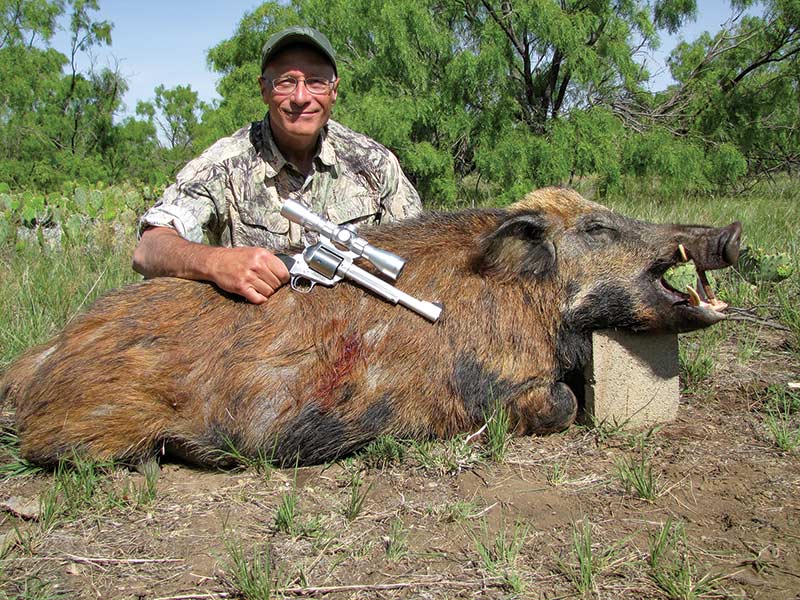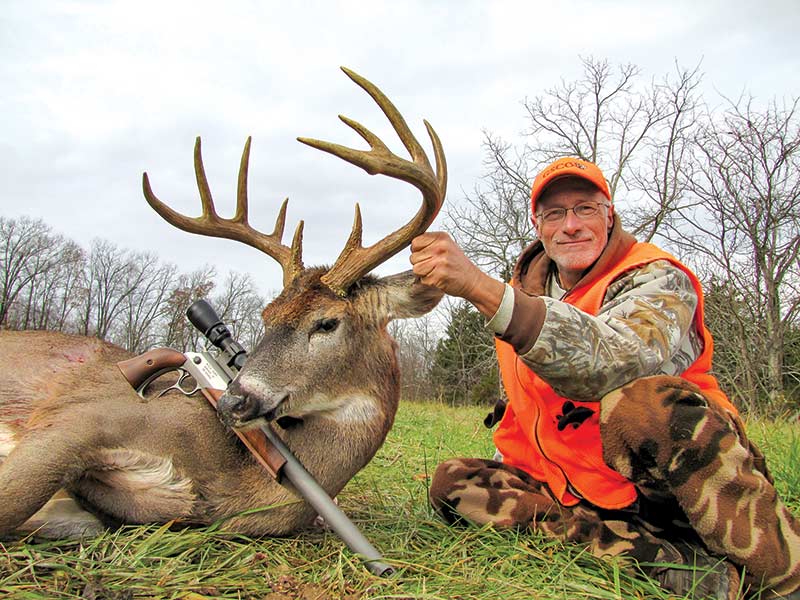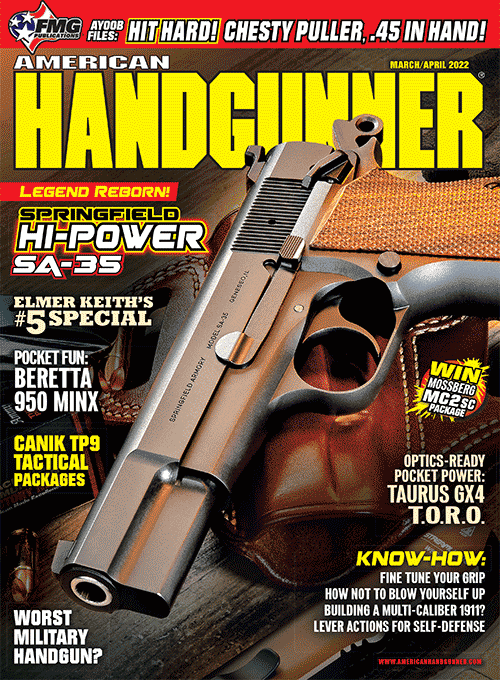What Handgun Caliber
Do You Really Need
For Deer and Hogs?
When surfing various social media sites, it becomes apparent many handgun hunters are pursuing whitetail deer and wild hogs. It certainly makes sense, as whitetail deer represent America’s most popular game animal. They inhabit a great deal of the lower 48 and provide ample opportunity for many handgunners hoping to punch their tag and fill a freezer full of tasty venison. The population of wild hogs has proliferated in recent times and now thrives in many states. They too have become popular with handgun hunters. Since these two species of game are widely popular with handgunners, what caliber is really needed for success?
Dose Of Reality
Opinions differ broadly and will come in an assortment of answers. Let’s look at this from a realistic angle realizing there are many cartridges capable of taking deer and hogs. Remember, polar bear hunting has been ingrained in the indigenous Arctic cultures for decades. Back in the day, many Inuit natives used a harpoon to take large and dangerous white bears. They eventually graduated to .22 LR, .22 Mag. and .223 with a variety of other small calibers to hunt polar bear. The fact the Inuits took many polar bear with a .22 Mag. doesn’t convince me this is a suitable choice. Likewise, there has been a trainload of whitetail deer taken with the .22 LR but this doesn’t mean it’s an appropriate, ethical, (or legal) cartridge in locales where deer hunting occurs.
So, we can discuss and debate different calibers until the cows come home. Before you start sending your cards, letters, emails and death threats to me for not mentioning your favorite round with which you’ve killed thousands of deer or hogs, let’s first look at what’s of paramount importance — the bullet doing all the dirty work.
The bullet, regardless of diameter, weight, or configuration, must create sufficient blood loss, terminate the working order of vital organs, or disrupt and cease function of the central nervous system. There are many calibers and bullets capable of causing blood loss and depriving the brain of enough oxygen to function.
The combination of accuracy, penetration, and ideally, expansion, will result in a clean, quick, humane demise. I mention expansion; remember we’re talking about deer and hogs — not rhino and elephant. Placing the bullet in the right place is most definitely the first step. Not doing so will probably lead to a wounded, unrecoverable animal. We can agree or disagree about cartridges and bullets for all eternity, but a well-placed shot will always remain essential.
Bullet Requirements
Obviously, the bullet must be capable of penetrating through hide, perhaps rib bones or shoulder blade, and muscle tissue to reach the vitals. Often, I hear those stating two holes are better than one. Well, to some extent — I agree. An entrance and exit hole will in most cases, leave a much better blood trail than entrance only.
But if it were only as simple as two holes are better than one, we’d all be shooting FMJ bullets! While FMJ or solid bullets may be the ticket for rhino and elephant, they are illegal in most states for hunting whitetail deer and grossly unethical. An FMJ or similar bullet will pass cleanly through an animal such as whitetail and hogs, leaving the proverbial “two holes are better than one” without creating a large and destructive wound channel.
Compared to an FMJ or solid, a well-constructed expanding bullet will create much greater tissue damage and ideally, will exit leaving a better probability of visible blood trail. Yes, I like two holes, but I want the bullet to devastate vital organs before saying goodbye. For hogs and deer, a premium expanding bullet is ideally suited for the task. When you place your shot in the proper location and the bullet transfers sufficient damage to vital organs, you’ll be processing meat shortly.
So, what do you really need for whitetail and hogs? Well, we’ve all got our favorites and thankfully there are lots of possibilities in both revolvers and single-shot handguns. I can’t get a good night’s sleep with anything less than a .357 Mag. If I had to choose only one revolver cartridge to hunt deer and hogs with for the rest of my life, I would hunt with the .44 Mag. In single-shots, the .308 Winchester would get the nod. Both of these rounds have served me well over the last few decades, successfully taking a ship load of venison and pork. Your mileage may and probably will vary. Thankfully we don’t have to choose only one and we’re fortunate there are plenty of cartridges capable of delivering the necessary punch.
A well-placed shot with the right bullet will be your friend. Choose wisely and enjoy the experience, and by all means, cherish the opportunity.






